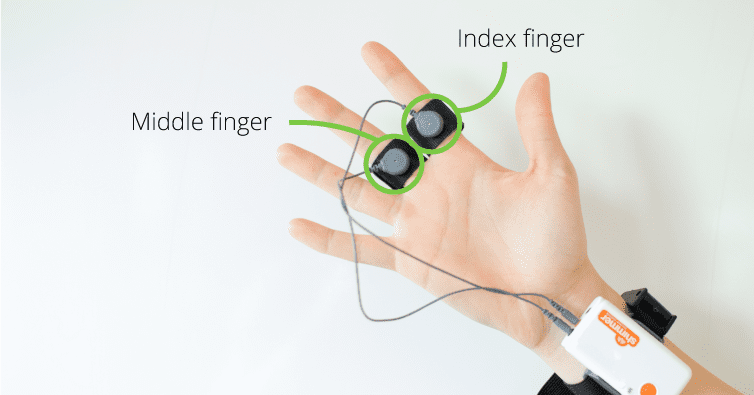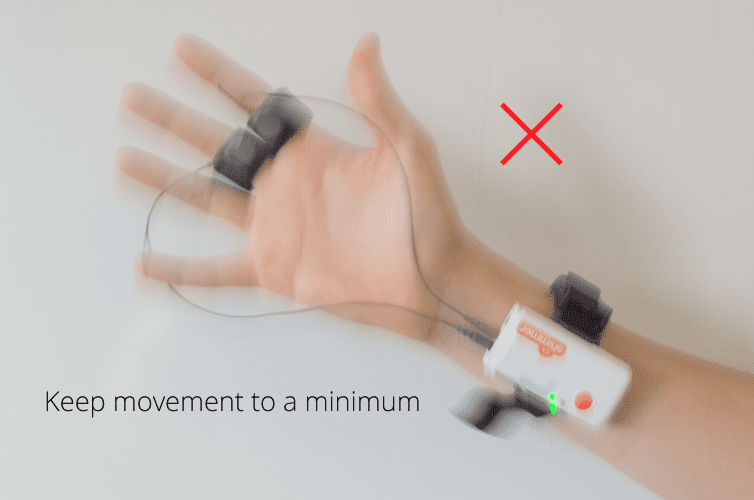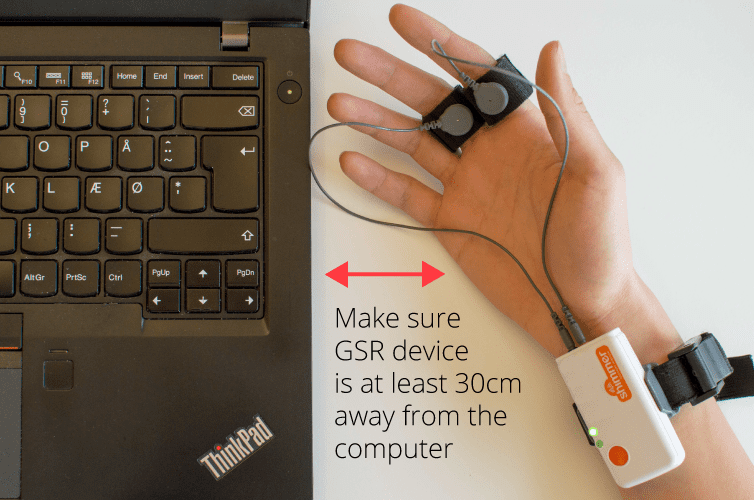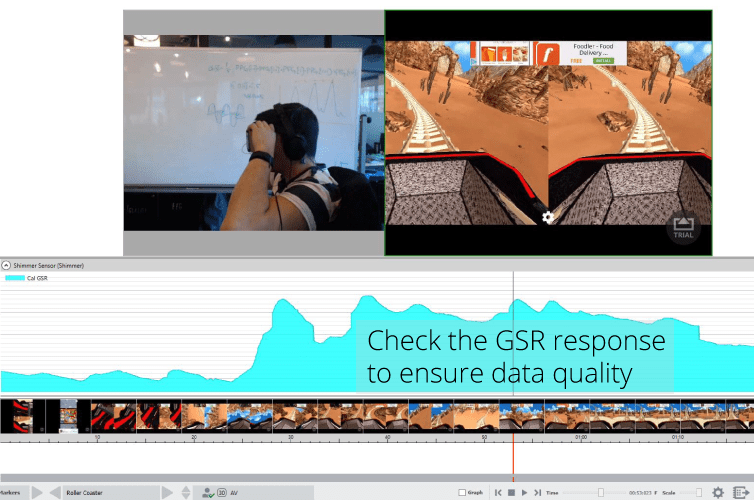Human behavior research can begin even at the surface of the skin. Galvanic skin response (often known as electrodermal activity, or EDA), is a unique way to investigate how our physiological activity can change and fluctuate in response to stimuli.
When a stimulus is physiologically or emotionally arousing, the electrical current at the surface of our skin increases. This process is ultimately under the control of the autonomic nervous system.
This means that it can provide critical information about how someone feels, and also can’t be consciously controlled, making it an insightful, and unbiased measure of how someone feels.
Understanding how stimuli (or a stimulus) impacts people can be particularly powerful when combined with other metrics that can determine emotional valence, or attentional processes, as it provides a new dimension to results and findings.
Getting it right however is the important part. While a fairly straightforward methodology, there are still several critical steps that should be followed to guarantee success with your GSR research.
That’s why we’ve put together our top five recommendations for ensuring high quality GSR data – meaning you can have even more confidence in the results.
Read on to learn more about the essentials for perfect GSR research.
Table of Contents
1. Placement

Typically, the electrodes are attached to the index and middle finger. It is also possible to place the electrodes in other locations (such as the shoulders, or even feet). The electrodes should be placed on the proximal part of the finger (i.e. not the joint), with the electrodes placed on the palm side of the hand.
If you’re also measuring heart rate during the experiment, then place the electrode for heart rate on the ring finger.
GSR sensitivity is different to EMG recordings. This means that unlike with EMG, you don’t need to clean the skin before recording can take place (although it doesn’t harm to ensure that the signal is as unimpeded as possible). This means that GSR measurements are often quicker to record.
2. Obstruction

Make sure that there is nothing obstructing the GSR electrodes (e.g. a ring) – anything that obstructs the device will of course impede the signal.
This applies not only for the electrode, but the device as a whole if it is wireless. To guarantee a strong continuous signal, you should try to maintain a relatively clear path from the device and the dongle on the computer.
Most wireless devices use Bluetooth which has a variable range depending on the device – this should be checked and piloted prior to the experiment starting.
3. Movement

Ensure the participant can move around if they need to, or are required to. If the participant has to use their hands (e.g. using a mouse), then ensure that it is attached to the hand that is not being used, or consider attaching electrodes to another location, such as the shoulders, or a foot.
Inform the respondent to move their hands as little as possible, if this is where the electrodes are attached.
4. Distance

Ensure that the GSR device is kept at least 30cm away from the computer to reduce interference from the electrical noise. However, if the device is wireless, ensure that the Bluetooth signal doesn’t drop off by making sure that the respondent doesn’t move too far away from the dongle at the computer.
5. Data

The good news with GSR is that you don’t need to carry out a calibration prior to collecting data – as long as it’s properly connected then your data will be good. The bad news is that there isn’t a built-in check for the data prior to recording.
One of the ways that you can quickly check the validity of the data is to ask the respondent to breath in and out rapidly (or hold their breath) – this should have a positive effect on the skin conductance, which you will be able to see live in iMotions.
What GSR Does Not Measure
It is important to note that while GSR can measure if there is an emotional response and the intensity of an emotional response, it does not measure the valence, i.e. whether that emotional response is positive or negative.
For this reason, it is best to combine GSR with other biometric measures such as eye tracking, Electroencephalography (EEG), and Facial Expression Analysis (FEA) to provide additional insight into why an individual or group of individuals may exhibit a particular strength of emotional response to certain stimuli and experiences.
Check out: What is EDA and how does it work?
GSR Academic Applications
Historically, GSR is an incredibly widespread method for testing how humans respond emotionally towards various stimuli. In psychological research, experimenters may use GSR to investigate how responses are affected by stimulus properties, personality characteristics, social expectancies, and interaction of cultural aspects and individual learning histories.
Clinically, GSR can be used during cognitive-behavioral therapy to provide a quantitative measure of physiological arousal of the patient and thus the severity of the disease of interest and the success of therapeutic intervention.
Let’s talk!
Schedule a free demo or get a quote to discover how our software and hardware solutions can support your research.
GSR Commercial Applications
GSR is an incredibly useful modality to add to commercial research, intersecting many different fields of interest. In consumer neuroscience and marketing, GSR can be measured to assess emotional arousal towards products and decisions made primarily based on affective and subconscious processes.
These findings can be utilized to enhance products, assess market segments, or identify target audiences and buyer personas. In media and ad testing, TV ads, trailers, and full length shows or films can be shown to individual participants or focus groups to monitor emotional engagement and identify key frames or scenes that “just don’t work.”
GSR is also heavily utilized in usability testing and UX design to provide insights into the stress level of users during interaction with new website content, user interfaces, and online forms to illuminate opportunities for optimization.
Check out: How UX testing can be improved and quantified
These are our essentials for getting human behavior research using GSR right. To get an even deeper understanding of the processes underlying GSR, then download our free pocket guide below.
Free 36-page EDA/GSR Guide
For Beginners and Intermediates
- Get a thorough understanding of all aspects
- Valuable GSR research insights
- Learn how to take your research to the next level












